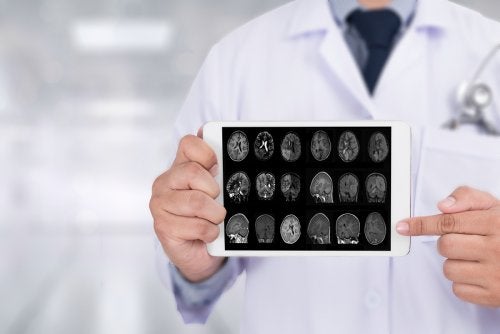What it’s like to live with multisystemic atrophy

Multisystemic atrophy is a rare neurodegenerative disorder. The symptoms that characterize this disorder in the early stage are similar to Parkinson’s disease.
 Multisystemic atrophy is a rare and neurodegenerative disorder in which the autonomic nervous system and movement are affected.
Multisystemic atrophy is a rare and neurodegenerative disorder in which the autonomic nervous system and movement are affected.
Symptoms that characterize this disorder include fainting spells and problems with heart rate and bladder control. In the initial stage, they are similar to Parkinson’s disease.
Multisystemic atrophy has a rapid evolution. The patient, over time, will be dependent on a wheelchair. He will suffer, among other degenerative processes, intermittent urinary catheterization and executive dysfunction.
The course of the disorder is assessed using the Unified Multisystemic Atrophy Rating Scale. This catalogs activities of daily living, neurovegetative motor disability and general disability.
Unfortunately, when it comes to multisystem atrophy, the degenerative process is inevitable, with a median survival time between 6 and 9 years. No treatment cures multisystemic atrophy although there are a number of measures and medications that help relieve symptoms.
What is multisystemic atrophy?
Currently, there is no known cause for multisystem atrophy. Although professionals in the field have studied whether it is due to a certain hereditary component or an environmental toxin that is related to the disease.
In none of the cases is there evidence that strongly supports the theories. The disease causes deterioration and atrophy of certain parts of the brain. Specifically, the cerebellum, the basal ganglia and the brain stem, which are responsible for regulating internal body functions, digestion and motor control.
The most characteristic symptoms, among many others, are the following:
- Loss of fine motor skills. Which means difficulty in doing the most basic activities like closing your mouth or chewing.
- Disruption in sleep patterns. Difficulty falling asleep and fatigue during the day.
- Frequent falls Due to the loss of control over one’s own body. Vertigo and fainting spells.
- Loss of bowel or bladder control.
- Absence of sweating that can occur anywhere on the body.
- Vision and speech problems.
The development of multisystemic atrophy can vary but the disease will never go into remission. As the degenerative process progresses, daily activities become increasingly difficult for the patient to perform.
What is the treatment of the disorder?
There is no cure for multisystem atrophy. There are also no treatments to slow the progression of brain degeneration. On the contrary, there are studies that are evaluating drugs that could delay the evolution of the disease.
Certain patients, who suffer from some of the most serious symptoms of the disease, may have specific medications or treatments for these symptoms. For example, fainting and dizziness are often treated with solutions such as adding salt to the diet and avoiding heavy meals and alcohol.
In this case, for patients on salt diets, fludrocortisone is also prescribed. Midodrine is also often prescribed to increase blood volume and narrow blood vessels. Likewise, drinking a glass or two of water before getting out of bed can also help raise your blood pressure.
Process of multisystemic atrophy
It is estimated that multisystem atrophy affects fewer than 5 people in 100,000.
The patient usually feels the urgency and desire to live his time since he is aware of the disease. Meanwhile, experience personally how the degenerative process progresses. This can lead to impotence, depression and crisis episodes.
It will be really important that the patient go to therapy, which will be of great help to be able to cope with the disease as well as possible. Likewise, the support of family and close people will also be essential.
Patients with multisystem atrophy generally live 7-10 years after the first symptoms appear. However, this index can vary. Sometimes people can live with the disease for more than 15 years.
Death, at the end of the disease, is generally due to respiratory problems due to the inability of the nervous system to carry out its own regulation.